我收藏的乾隆紫砂胎茶末釉茶壶
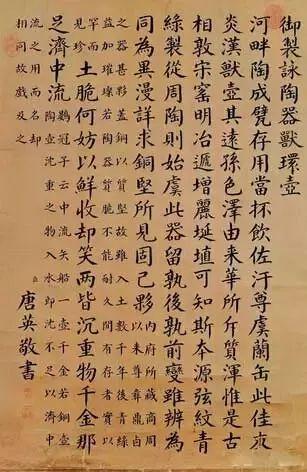
玩清三代茶末釉艺术陶瓷就要说说唐英
唐英(1682-1756年),清代陶瓷艺术家,能文善画,兼书法篆刻且又精通制瓷。沈阳人,雍正六年(1728年)奉命任景德镇御窑厂协理官,乾隆元年(1736年)起先后管理景德镇御窑厂的前后二十余年,被人们称为“唐窑”。
唐英本来不懂得烧瓷,由于他勤学苦练,没有架子,吃住都在窑口上面,和制陶工匠打成一片,上手很快,并且烧出一手好瓷。
在唐英的督办下,两朝的斗彩瓷器,器型变化多端、装饰富贵华丽、色彩绚丽缤纷。深得雍正,乾隆两位皇帝赞赏。
他仿古做得很好。
仿古采今,凡五十七种。自宋大观,明永乐、宣德、成化、嘉靖、万历诸官窑,及哥窑、定窑、均窑、龙泉窑、宜兴窑、西洋、东洋诸器,皆有仿制。其釉色,有白粉青、大绿、米色、玫瑰紫、海棠红、茄花紫、梅子青、骡肝、马肺、天蓝、霁红、霁青、鳝鱼黄、蛇皮绿、油绿、欧红、欧蓝、月白、翡翠、乌金、紫金诸种。又有浇黄、浇紫、浇绿、填白、描金、青花、水墨、五彩、锥花、拱花、抹金、抹银等等十分出名。
据文献记载,茶末釉是雍正时期,唐英继承前朝发明的品种。清代茶末釉分为三个品种,鳝鱼黄、蛇皮绿和黄斑点。茶末釉颜色偏青的俗称鳝鱼青,即蛇皮绿,颜色偏黄的应是鳝鱼黄,而黄色中多斑点的应是黄斑点。
茶末釉是中国古代铁结晶釉中重要的品种之一,属高温黄釉,估计始于唐代。以氧化铁为呈色剂,经1200℃至1300℃之间高温还原焰烧制而成。釉面釉色黄绿掺杂,类似茶叶细末,偏绿色者称茶,黄色称末,古朴清丽,大方,稳重。茶末釉起源于唐代黒釉,到了明代,景德镇御窑厂开始烧制,清朝把它发扬光大。据文章所载:“茶末釉黄杂绿色,妖娆而不俗,艳于花,美如玉”。
陶瓷质的作品 ,它的一般都是胎质紧密,胎壁略厚,釉面匀净,光泽莹润,釉面色有深有浅,深显黑褐,浅显黄色,釉色偏绿居多,俗称“蟹甲青”。乾隆茶末釉瓷器造型继承了雍正样式,也有仿古铜器式,款识器物底足内篆书大清乾隆年制六字。
茶叶末釉瓷器从传世品看,清代茶叶末瓷器基本生产于江西景德镇御窑厂,数量多、品种全,制作精美,多在雍正、乾隆二朝,其中雍正、乾隆的特色比较鲜明。
我特别喜爱的乾隆紫砂胎茶末茶壶。
紫砂胎泥疏松,透气,隔夜不怕变味。紫砂壶泡茶的好处:泡茶不失原味,色香味共存,能使茶叶越发的醇郁芳香,紫砂壶能吸收茶香,使用一段时日后,空壶注入沸水也有茶香,冷热急变适应性强,寒冬腊月,注入沸水,不因温度急变而胀裂,用紫砂壶泡茶,把玩不易烫手。
釉色耐看,魅力四射,釉面细腻,色泽幽静匀润,颜色艳美,沉稳,釉色绿黄中略黑(因为是紫砂的缘故)造型突出了秀丽,端庄,典雅,线条流畅,圆润,质朴简洁,刚中带柔,注重上下比例,前后协调,落款金色字体工整规矩,是一件上好的茶壶。
可见该釉色紫砂器具在清代是深得皇上喜爱的。我更是十分喜爱!
我五六岁就跟着爷爷去喝茶,深感茶之妙!
茶,人走茶凉,物是人非,事态炎凉。人即茶,茶即心,一盏清茶折射着世间万象。
一杯茶,儒家看到的是礼,佛门看到的是禅,道家看到的是气,商家看到的是利。
红尘之中,人一走,茶就凉,这是,自然规律,人没走,茶就凉,那是,事态炎凉,人这一生伏身落茶,初品无味,再品即苦,苦尽回甘,一切都是出于心,心静自然凉。
谢谢!谢谢!
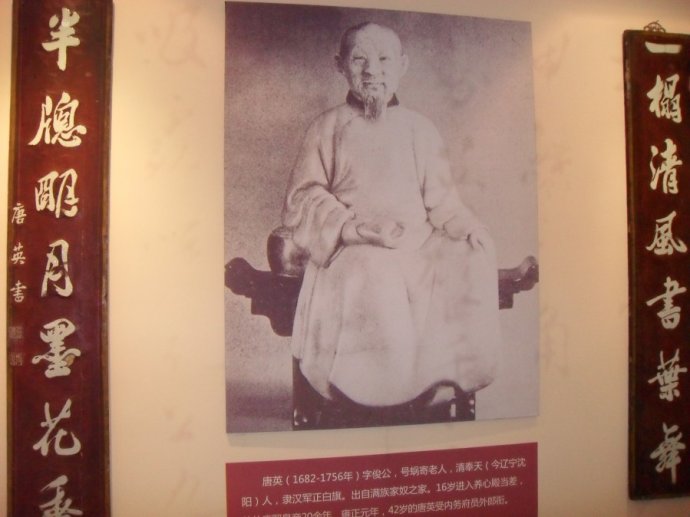
英文直译
English literal translation
To play the third generation of tea glaze art ceramics in Qing Dynasty
Tang and English (1682-1756), a ceramic artist in Qing Dynasty, was good at painting and calligraphy seal cutting and proficient in porcelain making. Shenyang, Yongzheng, was appointed as the deputy director of the Royal kiln factory in Jingdezhen in the sixth year (1728). In the first year of Qianlong (1736), he successively managed the Royal kiln in Jingdezhen for more than 20 years, and was called "Tang kiln".
Tang Ying didn't know how to burn porcelain. Because he was diligent and hardworking, he had no shelf, and he lived on the kiln mouth. He made a piece with the pottery maker. He started quickly and made a good porcelain.
Under the supervision of Tang Ying, the two dynasties' colorful porcelain, with various types, rich and gorgeous decoration, colorful colors. It was deeply Yongzheng, and the two emperors of Qianlong appreciated it.
He did a good job of imitating the old.
The ancient times are used today, and 57 species are used. From the Grand View of Song Dynasty, there are imitations of the Ming Dynasty Yongle, Xuande, Chenghua, Jiajing and Wanli kilns, as well as GE kiln, Dingyao, Jun kiln, Longquan kiln, Yixing kiln, Western and eastern ocean vessels. Its glaze color includes white pink green, big green, beige, rose purple, Begonia red, eggplant purple, plum green, mule liver, horse lung, sky blue, Ji Hong, Ji Qing, eel yellow, snake skin green, oil green, European red, European blue, moon white, jadeite, black gold and purple gold. There are also pouring yellow, purple, green, filling white, gold, blue and white, ink, five colors, cone, arch flowers, gold, silver and so on.
According to the literature, the tea glaze was the Yongzheng period, and Tang Ying inherited the varieties invented in the previous dynasties. The late glaze of tea in Qing Dynasty was divided into three varieties, eel yellow, snake skin green and spot. The color of tea glaze is generally called eel green, that is, snake skin green, while the yellow color should be eel yellow, while yellow should be multiple spots.
Tea glaze is one of the important varieties of ancient Chinese iron crystal glaze, which is a high temperature yellow glaze, which is estimated to have started in Tang Dynasty. The color of iron oxide was prepared by high temperature reduction flame between 1200 ℃ and 1300 ℃. Glaze glaze is yellow green mixed, similar to fine tea, the green is called tea, yellow is called the end, simple and beautiful, generous, stable. Tea glaze originated from black glaze in Tang Dynasty. In Ming Dynasty, Jingdezhen imperial kiln began to burn, and it was carried forward by Qing Dynasty. According to the article: "the glaze of tea end is yellow and green, enchanting and not vulgar, gorgeous in flowers, beautiful as jade.".
Ceramic works, it is generally of compact fetal quality, slightly thick fetal wall, even glaze, shiny and bright, glaze color has deep light, dark brown, light yellow, glaze color is mostly green, commonly known as "crab blue". The shape of the porcelain of the late Qianlong tea inherited the Yongzheng style, and also had the imitation of the ancient bronze ware, and the six characters of the seal script in the foot of the utensil were known.
From the perspective of the ancient Chinese, the tea porcelain of the late Qing Dynasty was basically produced in the Royal kiln factory in Jingdezhen, Jiangxi Province. It was in many quantities and varieties, and it was exquisite in the two dynasties, including Yongzheng and Qianlong, with distinctive characteristics.
I especially like the Qianlong purple sand tea pot.
The red sand is loose and airy, and it is not afraid of changing flavor overnight. The advantages of making tea in the purple sand pot: tea can not lose its original flavor, and the color and fragrance coexist, which can make the tea more mellow and fragrant. The purple sand pot can absorb the tea fragrance. After a period of time, the empty pot can inject boiling water with tea fragrance. It is also adaptable to the hot and cold. In winter and in the last month, the boiling water is injected, and it will not expand and crack due to the rapid temperature. It is difficult to scald the game by making tea with the purple sand pot.
The glaze is durable, charming, delicate, quiet and smooth, and the color is gorgeous and steady. The glaze is green and yellow and slightly black (because of the purple sand) and highlights the beautiful, dignified, elegant, smooth lines, mellow, simple and simple, just with soft middle band, attention to the proportion of the upper and lower, the front and the back coordination, and the gold font is a good teapot.
It can be seen that the glaze purple sand appliance was deeply loved by the emperor in Qing Dynasty. I love it more!
I followed my grandfather to tea when I was 56, and I felt the beauty of tea!
Tea, people go tea cool, things are human rights, the situation is hot. People are tea, tea is heart, a clear tea reflects the world.
A cup of tea, Confucianism saw ceremony, Buddhism saw Zen, Taoism saw Qi, business see is profit.
In the black and dust, when people leave, tea is cool. This is the natural law. If people don't go, tea will be cool. That is, the situation is hot and cool. People fall in their body for a lifetime. The first product is tasteless, and the second product is bitter. All of them are from the heart and the mind is naturally cool.
thank you! thank you!
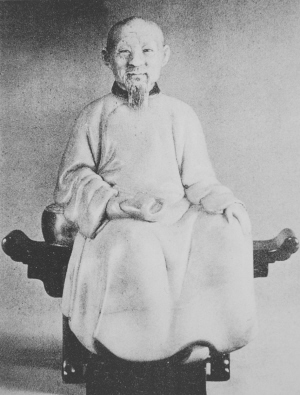


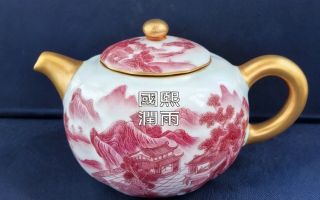
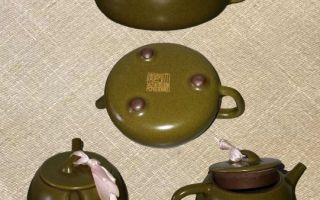

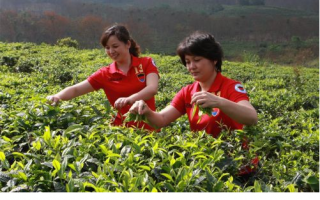
0 条 评 论 Write a Response